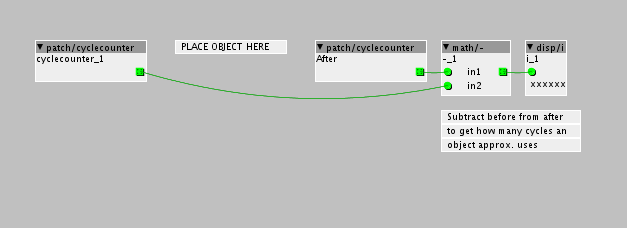Is it possible to hard-code object references instead of using an attribute?
Eg. I have those scale/temperament banks/modules which always listen to the same module and only one is needed ánd which will always end up being "scale7bank_1". So couldn't I also just do this in the code so that people don't have to enter that each time... or is the patch-name embedded in the object-reference attribute?
Also I had an idea about a morph-option for single knobs/sliders objects with a centralised rate&morph control to be used with the preset-manager of the axoloti. But giving each single knob a big object-reference is kinda ugly... and waste of space..
so yeah, in these cases a hard-coded object reference would be nice..

 )
)
